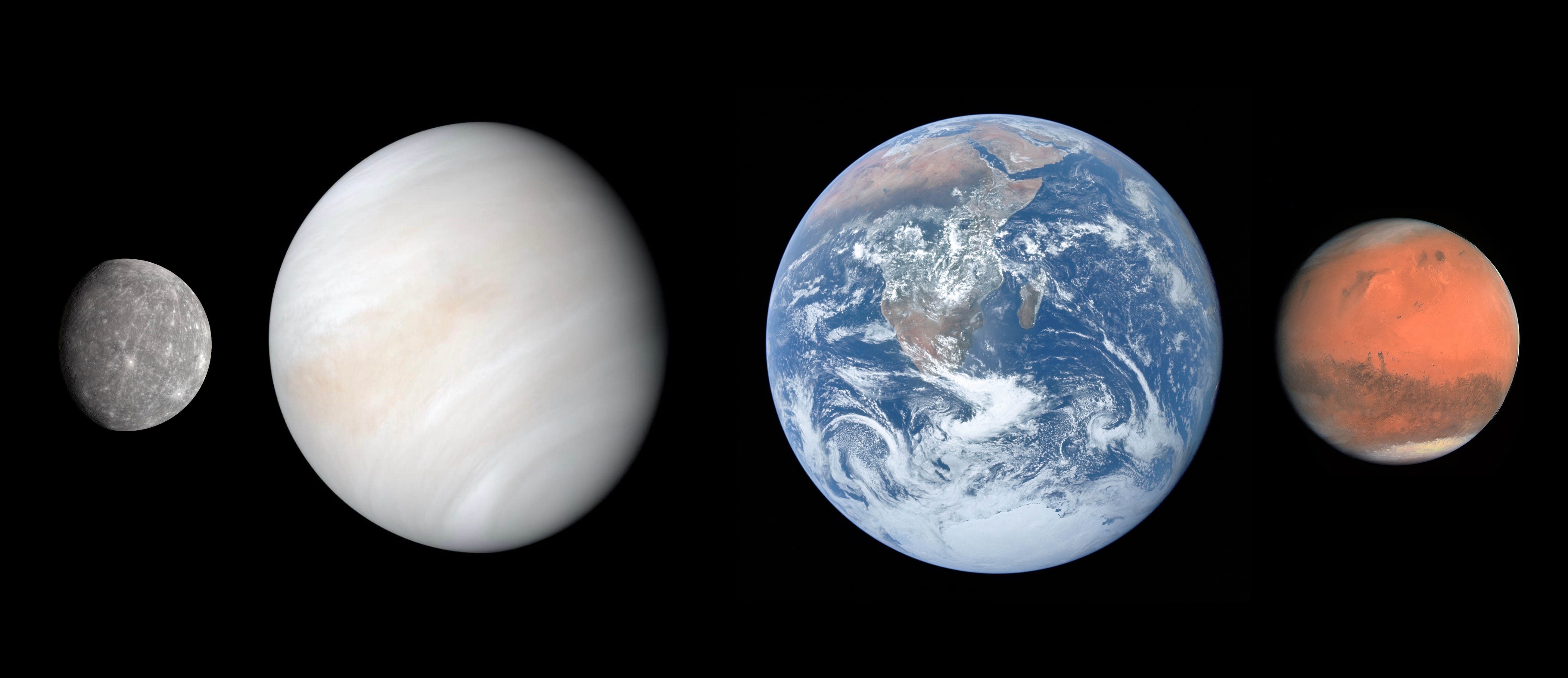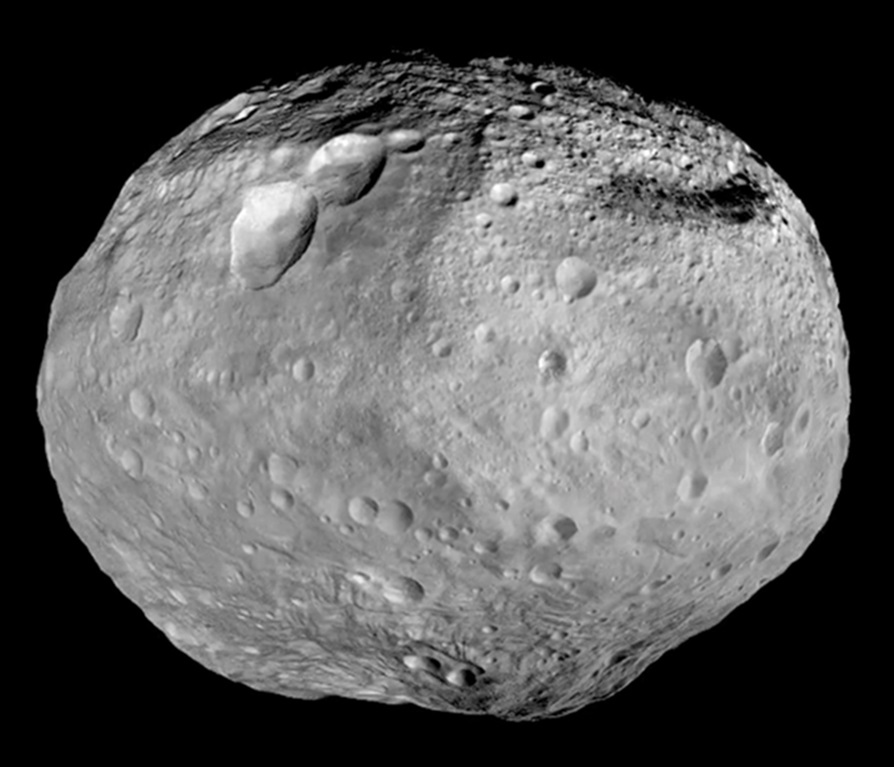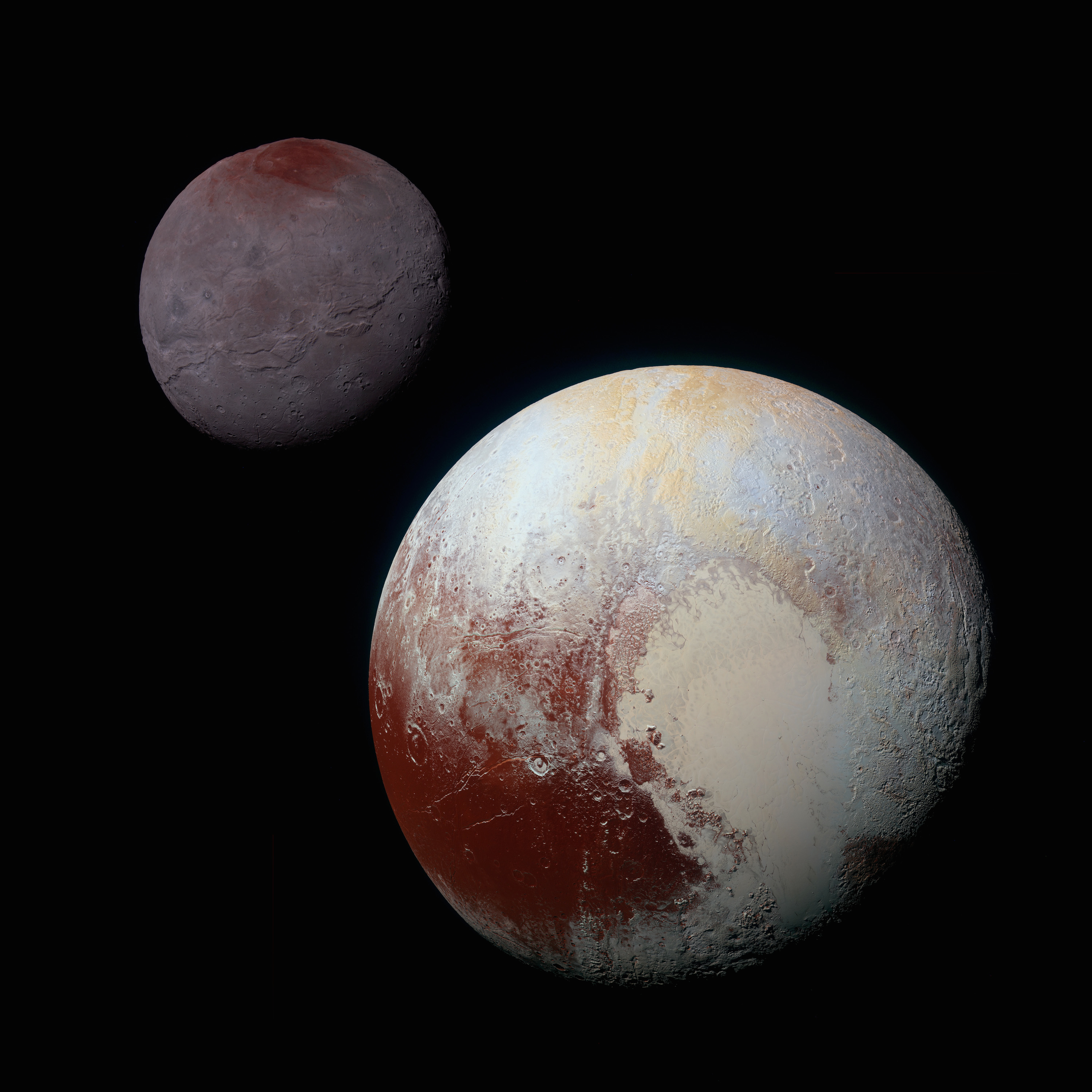|
4 Vesta
Vesta (minor-planet designation: 4 Vesta) is one of the largest objects in the asteroid belt, with a mean diameter of . It was discovered by the German astronomer Heinrich Wilhelm Matthias Olbers on 29 March 1807 and is named after Vesta, the virgin goddess of home and hearth from Roman mythology. Vesta is thought to be the second-largest asteroid, both by mass and by volume, after the dwarf planet Ceres, though in volume it overlaps with the uncertainty in the measurements of 2 Pallas.Marsset, M., Brož, M., Vernazza, P. et al. The violent collisional history of aqueously evolved (2) Pallas. Nat Astron 4, 569–576 (2020). https://doi.org/10.1038/s41550-019-1007-5 Measurements give it a nominal volume only slightly larger than that of Pallas (about 5% greater, which is the magnitude of the uncertainties in measurement), but it is 25% to 30% more massive. It constitutes an estimated 9% of the mass of the asteroid belt. Vesta is the only known remaining rocky protoplanet (with a ... [...More Info...] [...Related Items...] OR: [Wikipedia] [Google] [Baidu] |
Vesta Symbol (variable Width)
Vesta may refer to: Fiction and mythology * Vesta (mythology), Roman goddess of the hearth and home * Vesta (Marvel Comics), a Marvel Comics character * Sailor Vesta, a character in ''Sailor Moon'' Brands and products * Lada Vesta, a car from Russian car manufacturer AVTOVAZ * Swan Vesta (began 1883), a brand of matches ** Vesta case, metal containers for matches (which were previously called vestas) * Vesta, a freeze-dried meal brand launched in the United Kingdom by Batchelors in the early 1970s, and now owned by Premier Foods. Music * Vesta (1957–2011), stage name of American recording artist Vesta Williams ** ''Vesta'' (album), 1986 album by Vesta Williams ** ''Vesta 4 U'', 1988 album by Vesta Williams * Vesta, a 2008 rock band made up of former members of The Juliana Theory Places * Monte Vesta, Lombardy, Italy * Temple of Vesta, Rome, Italy * Vesta Nunataks, Alexander Island, Antarctica * 4 Vesta, an asteroid Canada * Vesta Creek (Alberta), a stream in northern Albert ... [...More Info...] [...Related Items...] OR: [Wikipedia] [Google] [Baidu] |
V-type Asteroid
A V-type asteroid or Vestoid is an asteroid whose spectral type is that of 4 Vesta. Approximately 6% of main-belt asteroids are vestoids, with Vesta being by far the largest of them. They are relatively bright, and rather similar to the more common S-type asteroid, which are also made up of stony irons and ordinary chondrites, with V-types containing more pyroxene than S-types. A large proportion of vestoids have orbital elements similar to those of Vesta, either close enough to be part of the Vesta family, or having similar eccentricities and inclinations but with a semi-major axis lying between about 2.18 AU and the 3:1 Kirkwood gap at 2.50 AU. This suggests that they originated as fragments of Vesta's crust. There seem to be two populations of Vestoids, one created 2 billion years ago and the other 1 billion years ago, coming respectively from the enormous southern-hemisphere craters Veneneia and Rheasilvia. Fragments that ended up in the 3:1 Jupiter resonance were perturbed o ... [...More Info...] [...Related Items...] OR: [Wikipedia] [Google] [Baidu] |
HED Meteorite
HED meteorites are a clan (subgroup) of achondrite meteorites. HED stands for "howardite–eucrite–diogenite". These achondrites came from a differentiated parent body and experienced extensive igneous processing not much different from the magmatic rocks found on Earth and for this reason they closely resemble terrestrial igneous rocks. Classification HED meteorites are broadly divided into: * Howardites * Eucrites * Diogenites Several subgroups of both eucrites and diogenites have been found. The HED meteorites account for about 5% of all falls, which is about 60% of all achondrites. Origin No matter their composition all these types of meteorite are thought to have originated in the crust of the asteroid Vesta. According to this theory the differences of composition are due to their ejection at different moments in the geologic history of Vesta. Their crystallization ages have been determined to be between 4.43 and 4.55 billion years from radioisotope ratios. HED meteorit ... [...More Info...] [...Related Items...] OR: [Wikipedia] [Google] [Baidu] |
Terrestrial Planet
A terrestrial planet, telluric planet, or rocky planet, is a planet that is composed primarily of silicate rocks or metals. Within the Solar System, the terrestrial planets accepted by the IAU are the inner planets closest to the Sun: Mercury, Venus, Earth and Mars. Among astronomers who use the geophysical definition of a planet, two or three planetary-mass satellites – Earth's Moon, Io, and sometimes Europa – may also be considered terrestrial planets; and so may be the rocky protoplanet-asteroids Pallas and Vesta.Emily Lakdawalla et al.What Is A Planet?The Planetary Society, 21 April 2020 The terms "terrestrial planet" and "telluric planet" are derived from Latin words for Earth (''Terra'' and ''Tellus''), as these planets are, in terms of structure, ''Earth-like''. Terrestrial planets are generally studied by geologists, astronomers, and geophysicists. Terrestrial planets have a solid planetary surface, making them substantially different from the larger gaseous plane ... [...More Info...] [...Related Items...] OR: [Wikipedia] [Google] [Baidu] |
Planetary Differentiation
In planetary science, planetary differentiation is the process by which the chemical elements of a planetary body accumulate in different areas of that body, due to their physical or chemical behavior (e.g. density and chemical affinities). The process of planetary differentiation is mediated by partial melting with heat from radioactive isotope decay and planetary accretion. Planetary differentiation has occurred on planets, dwarf planets, the asteroid 4 Vesta, and natural satellites (such as the Moon). Physical differentiation Gravitational separation High-density materials tend to sink through lighter materials. This tendency is affected by the relative structural strengths, but such strength is reduced at temperatures where both materials are plastic or molten. Iron, the most common element that is likely to form a very dense molten metal phase, tends to congregate towards planetary interiors. With it, many siderophile elements (i.e. materials that readily alloy with iron) ... [...More Info...] [...Related Items...] OR: [Wikipedia] [Google] [Baidu] |
Protoplanet
A protoplanet is a large planetary embryo that originated within a protoplanetary disc and has undergone internal melting to produce a differentiated interior. Protoplanets are thought to form out of kilometer-sized planetesimals that gravitationally perturb each other's orbits and collide, gradually coalescing into the dominant planets. The planetesimal hypothesis A planetesimal is an object formed from dust, rock, and other materials, measuring from meters to hundreds of kilometers in size. According to the Chamberlin–Moulton planetesimal hypothesis and the theories of Viktor Safronov, a protoplanetary disk of materials such as gas and dust would orbit a star early in the formation of a planetary system. The action of gravity on such materials form larger and larger chunks until some reach the size of planetesimals. It is thought that the collisions of planetesimals created a few hundred larger planetary embryos. Over the course of hundreds of millions of years, they colli ... [...More Info...] [...Related Items...] OR: [Wikipedia] [Google] [Baidu] |
2 Pallas
Pallas (minor-planet designation: 2 Pallas) is the second asteroid to have been discovered, after Ceres. It is believed to have a mineral composition similar to carbonaceous chondrite meteorites, like Ceres, though significantly less hydrated than Ceres. It is the third-largest asteroid in the Solar System by both volume and mass, and is a likely remnant protoplanet. It is 79% the mass of Vesta and 22% the mass of Ceres, constituting an estimated 7% of the mass of the asteroid belt. Its estimated volume is equivalent to a sphere in diameter, 90–95% the volume of Vesta. During the planetary formation era of the Solar System, objects grew in size through an accretion process to approximately the size of Pallas. Most of these protoplanets were incorporated into the growth of larger bodies, which became the planets, whereas others were ejected by the planets or destroyed in collisions with each other. Pallas, Vesta and Ceres appear to be the only intact bodies from this ... [...More Info...] [...Related Items...] OR: [Wikipedia] [Google] [Baidu] |
Ceres (dwarf Planet)
Ceres (; minor-planet designation: 1 Ceres) is a dwarf planet in the asteroid belt between the orbits of Mars and Jupiter. It was the first asteroid discovered, on 1 January 1801, by Giuseppe Piazzi at Palermo Astronomical Observatory in Sicily and announced as a new planet. Ceres was later classified as an asteroid and then a dwarf planetthe only one always inside Neptune's orbit. Ceres's small size means that even at its brightest, it is too dim to be seen by the naked eye, except under extremely dark skies. Its apparent magnitude ranges from 6.7 to 9.3, peaking at opposition (when it is closest to Earth) once every 15- to 16-month synodic period. As a result, its surface features are barely visible even with the most powerful telescopes, and little was known about it until the robotic NASA spacecraft ''Dawn'' approached Ceres for its orbital mission in 2015. ''Dawn'' found Ceres's surface to be a mixture of water ice, and hydrated minerals such as carbonates and clay. Gra ... [...More Info...] [...Related Items...] OR: [Wikipedia] [Google] [Baidu] |
Dwarf Planet
A dwarf planet is a small planetary-mass object that is in direct orbit of the Sun, smaller than any of the eight classical planets but still a world in its own right. The prototypical dwarf planet is Pluto. The interest of dwarf planets to planetary geologists is that they may be geologically active bodies, an expectation that was borne out in 2015 by the ''Dawn'' mission to and the '' New Horizons'' mission to Pluto. Astronomers are in general agreement that at least the nine largest candidates are dwarf planets: Pluto, , , , , , , , and . Of these and the tenth-largest candidate , all but Sedna have either been visited by spacecraft (Pluto and Ceres) or have at least one known moon (Pluto, Eris, Haumea, Makemake, Gonggong, Quaoar, Orcus, and Salacia), which allows their masses and thus an estimate of their densities to be determined. Mass and density in turn can be fit into geophysical models in an attempt to determine the nature of these worlds. Some astronomers include ... [...More Info...] [...Related Items...] OR: [Wikipedia] [Google] [Baidu] |
Roman Mythology
Roman mythology is the body of myths of ancient Rome as represented in the literature and visual arts of the Romans. One of a wide variety of genres of Roman folklore, ''Roman mythology'' may also refer to the modern study of these representations, and to the subject matter as represented in the literature and art of other cultures in any period. Roman mythology draws from the mythology of the Italic peoples and ultimately from Proto-Indo-European mythology. Roman mythology also draws directly on Greek mythology, potentially as early as Rome's protohistory, but primarily during the Hellenistic period of Greek influence and through the Roman conquest of Greece, via the artistic imitation of Greek literary models by Roman authors. The Romans identified their own gods with those of the ancient Greeks—who were closely historically related in some cases, such as Zeus and Jupiter—and reinterpreted myths about Greek deities under the names of their Roman counterparts. Greek and ... [...More Info...] [...Related Items...] OR: [Wikipedia] [Google] [Baidu] |
Heinrich Wilhelm Matthias Olbers
Heinrich Wilhelm Matthias Olbers (; ; 11 October 1758 – 2 March 1840) was a German physician and astronomer. Life and career Olbers was born in Arbergen, Germany, today part of Bremen, and studied to be a physician at Göttingen (1777–80). While he was at Göttingen, he studied mathematics with Abraham Gotthelf Kästner. In 1779, while attending to a sick fellow student, he devised a method of calculating cometary orbits which made an epoch in the treatment of the subject. It was the first satisfactory method of calculating cometary orbits. After his graduation in 1780, he began practicing medicine in Bremen. At night he dedicated his time to astronomical observation, making the upper story of his home into an observatory. In 1800, Olbers was one of 24 astronomers invited to participate in the group known as the "celestial police", dedicated to finding new planets in the solar system. On 28 March 1802, Olbers discovered and named the asteroid Pallas. Five years later, on ... [...More Info...] [...Related Items...] OR: [Wikipedia] [Google] [Baidu] |
Diameter
In geometry, a diameter of a circle is any straight line segment that passes through the center of the circle and whose endpoints lie on the circle. It can also be defined as the longest chord of the circle. Both definitions are also valid for the diameter of a sphere. In more modern usage, the length d of a diameter is also called the diameter. In this sense one speaks of diameter rather than diameter (which refers to the line segment itself), because all diameters of a circle or sphere have the same length, this being twice the radius r. :d = 2r \qquad\text\qquad r = \frac. For a convex shape in the plane, the diameter is defined to be the largest distance that can be formed between two opposite parallel lines tangent to its boundary, and the is often defined to be the smallest such distance. Both quantities can be calculated efficiently using rotating calipers. For a curve of constant width such as the Reuleaux triangle, the width and diameter are the same because all ... [...More Info...] [...Related Items...] OR: [Wikipedia] [Google] [Baidu] |




